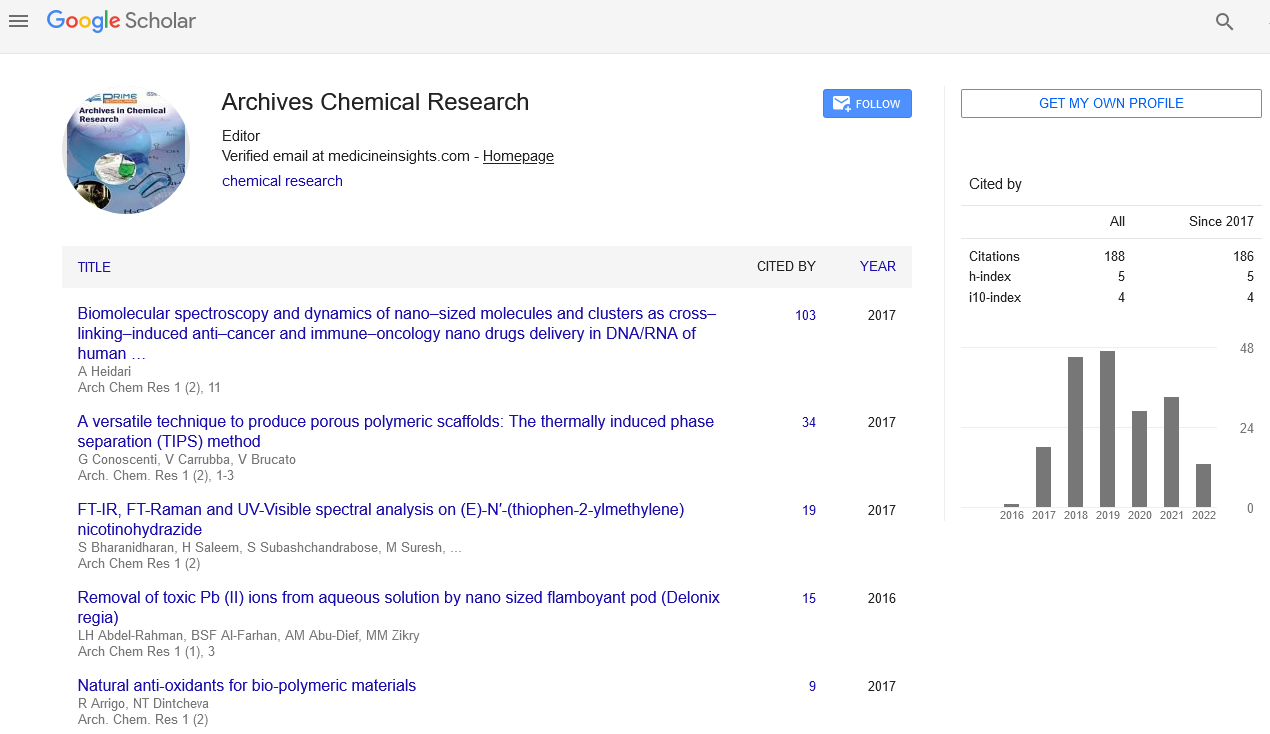Perspective - (2022) Volume 6, Issue 1
The Effects of Chlorofluorocarbons on Environment
Zhiqiang Huang*
Department of Chemical Engineering, Xiamen University, China
*Correspondence:
Zhiqiang Huang, Department of Chemical Engineering, Xiamen University,
China,
Email:
Received: 31-Jan-2022, Manuscript No. IPJDA-22-12908;
Editor assigned: 02-Feb-2022, Pre QC No. IPJDA-22-12908 (PQ);
Reviewed: 16-Feb-2022, QC No. IPJDA-22-12908;
Revised: 21-Feb-2022, Manuscript No. IPJDA-22-12908 (R);
Published:
28-Feb-2022, DOI: 10.21767/2572-4657.6.1.03
Introduction
Chlorofluorocarbons, or CFCs, are non-flammable fluids that have
been used as refrigerants, spray charges, and cleaning agents all at
the same time. CFCs have been mostly phased out since researchers
linked them to ozone depletion, but ancient coolers and other
CFC-using devices could still be of use. CFCs can harm human
health by inhalation, absorption, or other direct contact, as well as
exposure to harmful levels of intense light.
Chlorofluorocarbons’ climate consequences aren’t limited to
their role as ozone-depleting manmade compounds. Heat at that
frequency is kept out of the world’s air by infrared assimilation
groups. Because of the overall straightforwardness of the air inside
this district, CFCs have their most grounded assimilation groups
from C-F and C-Cl bonds in the otherworldly area of 7.8-15.3 m,
referred to as “air window.”
Description
Chlorofluorocarbons and other lifeless fluorine-containing gases
like perfluorocarbons, HFCs, HCFCs, and bromofluorocarbons
have a “super” ozone harming substance (GHG) impact due to the
strength of CFC ingestion groups and the exceptional vulnerability
of the climate at frequencies where CFCs (without a doubt all
covalent fluorine compounds) assimilate. The use of some chloroalkanes
as solvents for wide-ranging applications, such as cleaning,
has been prohibited, for example, by the IPPC regulation on
ozone-depleting compounds in 1994 and the European Union’s
unpredictable natural mixtures (VOC) mandate in 1997. Allowable
chlorofluoroalkane applications are, in a sense, regenerative.
According to established researchers, the ozone layer’s opening
has begun to recover as a result of CFC boycotts. India is one of
just a few rare countries that have pioneered the use of non-ozone
depleting technologies while still having a low Global Warming Potential
(GWP). CFCs can be ingested or come into contact with the
skin. Certain people may get skin irritation or dermatitis as a result
of dermal interactions with CFCs. According to the New Hampshire Department of Environmental Sciences, skin frostbite can
be caused by exposure to compressed CFCs, such as that from a
refrigerant hole. According to the Scottish Environment Protection
Agency, direct skin exposure to CFCs has not been linked to malignant
development. Ingesting CFCs might result in nausea, regurgitation,
the runs, or other unpleasant effects on the digestive tract.
Chlorofluorocarbons have been linked to abnormalities with the
human immune system, and researchers have linked direct exposure
to issues with the focused sensory system. These problems
could include breathing difficulties or injuries to the heart, kidneys,
or liver. Furthermore, according to the University of Georgia,
excessive sun exposure suffocates the skin’s natural defences.
CFCs contribute to the ozone layer’s depletion, which protects us
from the sun’s strong rays. This exposes more people to UV radiation,
which can lead to skin cancer. According to the University of
Georgia, one out of every five Americans develops skin cancer over
their lifetime. A few persons experience wrinkled, thick, or tough
skin as a result of excessive sun exposure, regardless of whether
they promote skin malignancy. Additionally, prolonged exposure
to strong lights can result in waterfalls, macular degeneration, and
other eye problems.
Conclusion
CFCs (chlorofluorocarbons) are a group of odourless manmade
chemicals. CFCs have been banned since 1996 because they destroy
the world’s ozone layer. The depletion of the ozone layer will
have a negative impact on the earth’s biodiversity. Excessive radiation
striking the Earth’s outer layer will obliterate rural efficiency
and even flora. It can even cause people to get skin cancer.
Acknowlegement
None
Conflict of Interest
Authors declare no conflict of interest
Citation: Huang Z (2022) The Effects of Chlorofluorocarbons on Environment. Arch Chem Res. 6:03
Copyright: © Huang Z. This is an open-access article distributed under the terms of the Creative Commons Attribution License, which permits unrestricted use, distribution, and reproduction in any medium, provided the original author and source are credited.

